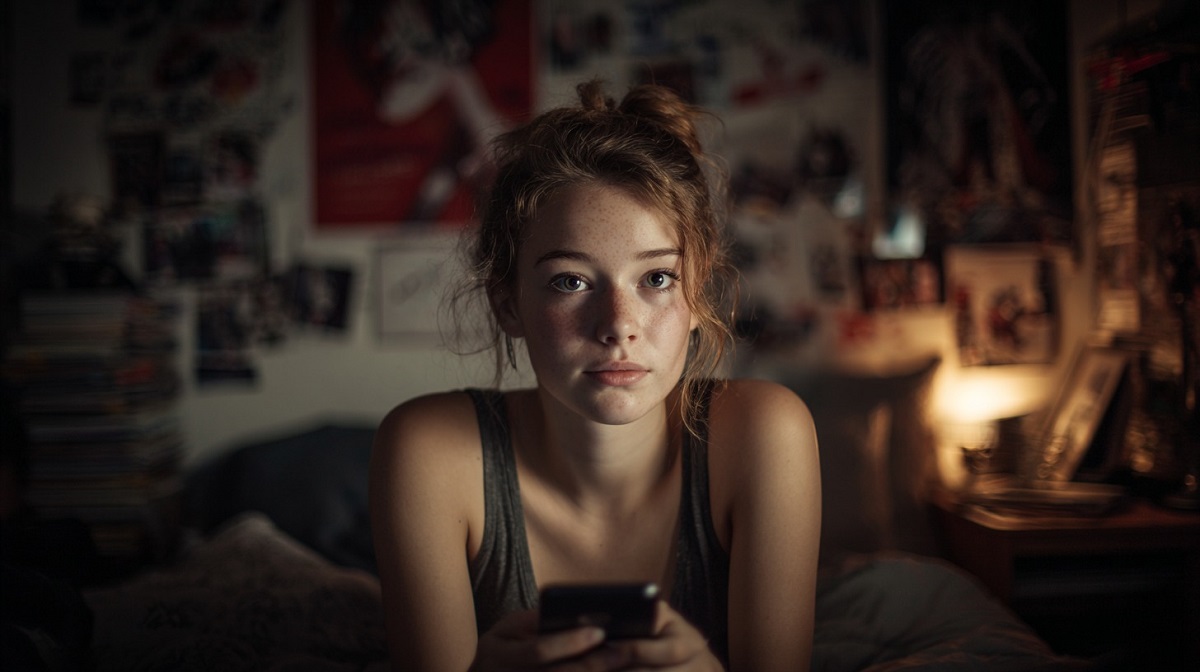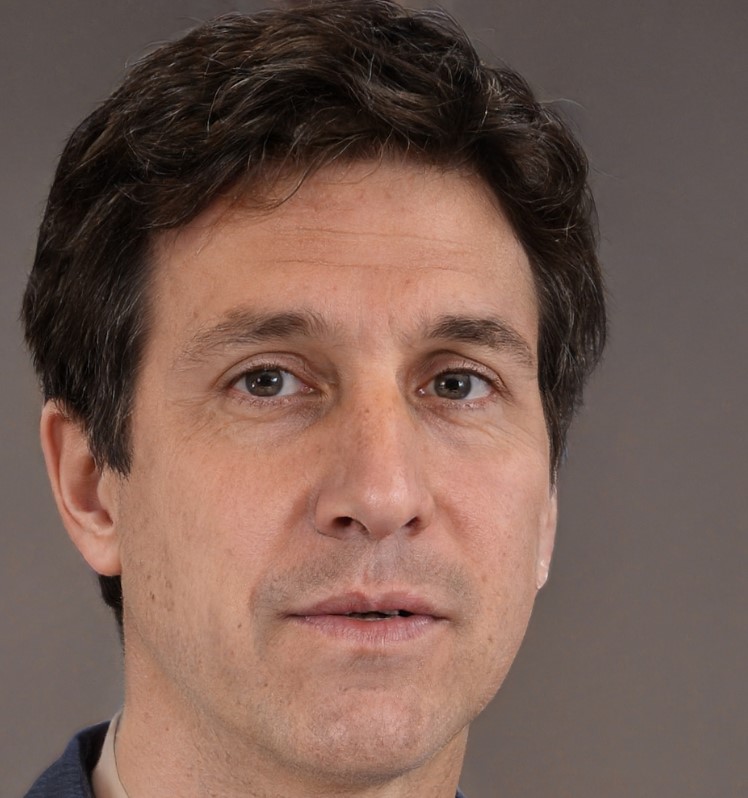An entire generation of teenagers has grown up scrolling through screens before sleep, counting likes instead of counting stars. Across the United States and Europe, doctors, researchers, and parents are asking the same question: has social media made adolescence emotionally harder?
Recent data from the World Health Organization, Pew Research Center, and leading medical institutions, including Yale, Johns Hopkins, and the Child Mind Institute, reveal a pattern that feels impossible to ignore.
Rates of anxiety, depression, and loneliness among teens are climbing, often in step with the hours they spend on Instagram, TikTok, Snapchat, and other digital platforms.
The evidence tells a story both complex and urgent. Some teenagers say social media connects them to friends and helps them find acceptance.
Others describe it as a pressure cooker filled with comparison, fear of missing out, and cyberbullying. Health agencies warn that the cost of constant connection may include disrupted sleep, distorted self-image, and declining emotional resilience.
Experts across continents agree on one point: social media is not a single villain, but it is part of a system reshaping how young people see themselves, each other, and the world around them.
Teen Anxiety and Depression Are Climbing Fast
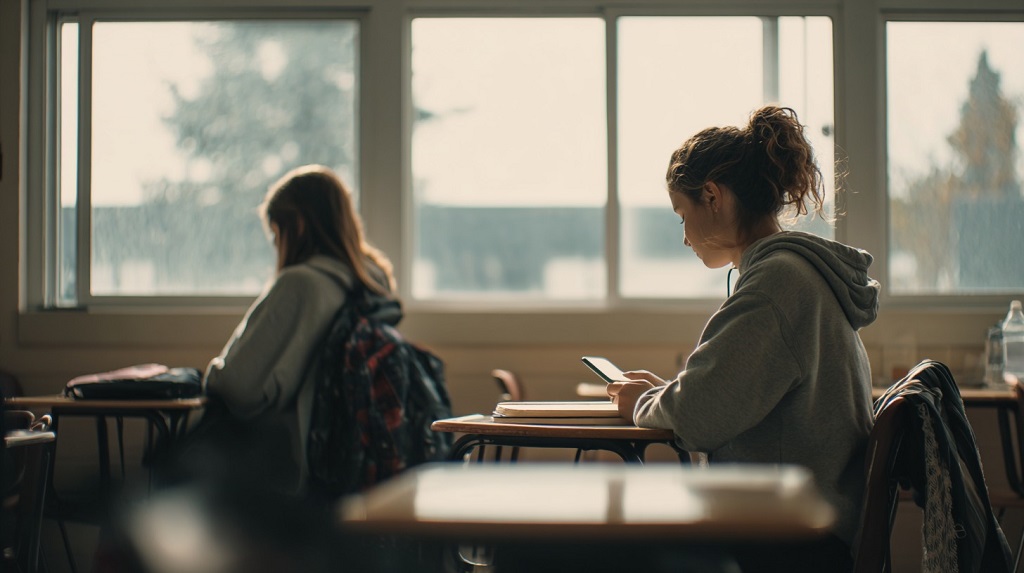
Data from the Centers for Disease Control and Prevention show a sharp rise in emotional distress among high school students over the past decade.
- Over 40% of U.S. teens say they feel persistently sad or hopeless.
- A decade ago, that number was 28%.
- Among girls, the figure jumps to nearly 60%, compared with 29% for boys.
In Europe, the World Health Organization tracked nearly 280,000 adolescents across 44 countries. It found that 11% already show signs of what experts call problematic social media behavior — losing control of their online use, neglecting sleep, or feeling anxious when disconnected.
Health professionals say the pattern is unmistakable. Clinics in major cities like London, Berlin, and New York report more teenagers seeking therapy for:
- Panic attacks
- Isolation and social withdrawal
- Fatigue tied to emotional exhaustion
Social Media Use Has Reached Record Levels
Surveys by the Pew Research Center show that 95% of U.S. teens between ages 13 and 17 use at least one social media platform daily.
Around a third say they are online almost constantly, a pattern that has turned social media into an all-day presence in their lives.
The most popular apps, TikTok, Instagram, Snapchat, and YouTube, dominate teen routines. Each platform serves a slightly different purpose, but all share one effect: constant emotional engagement.
- TikTok draws users in with endless short videos that trigger quick emotional highs and lows.
- Instagram fuels comparison through carefully filtered images and follower counts.
- Snapchat promotes constant contact through streaks that push teens to check in dozens of times a day.
- YouTube turns into a space where long hours blur between entertainment and isolation.
Health experts say this nonstop cycle impacts mood and focus. The World Health Organization has linked heavy social media use to reduced sleep, higher anxiety, and lower life satisfaction. Many teenagers now admit they spend too much time online yet struggle to disconnect.
The consequences are drawing legal and public attention. A TikTok lawsuit for mental health filed in several U.S. states claims the platform’s design amplifies anxiety and depression in young users through addictive scrolling patterns and exposure to harmful content. Lawmakers are reviewing similar claims involving Instagram and Snapchat as new data ties algorithm-driven engagement to emotional distress.
Across the Atlantic, the WHO European report found that 36% of teens stay in constant online contact with friends, while 13% of girls show signs of problematic social media use. The report warned that unchecked screen time risks turning connection into dependency.
Why Social Media Makes Teens Feel Anxious and Depressed
Doctors say social media affects how the teenage brain reacts to attention and approval. Every like, comment, and notification releases a small burst of dopamine, the chemical that makes people feel rewarded.
After enough time, that reward starts to fade, and teens feel uneasy when those reactions slow down. Many begin to chase that feeling again, checking their phones every few minutes for another rush.
Constant Comparison
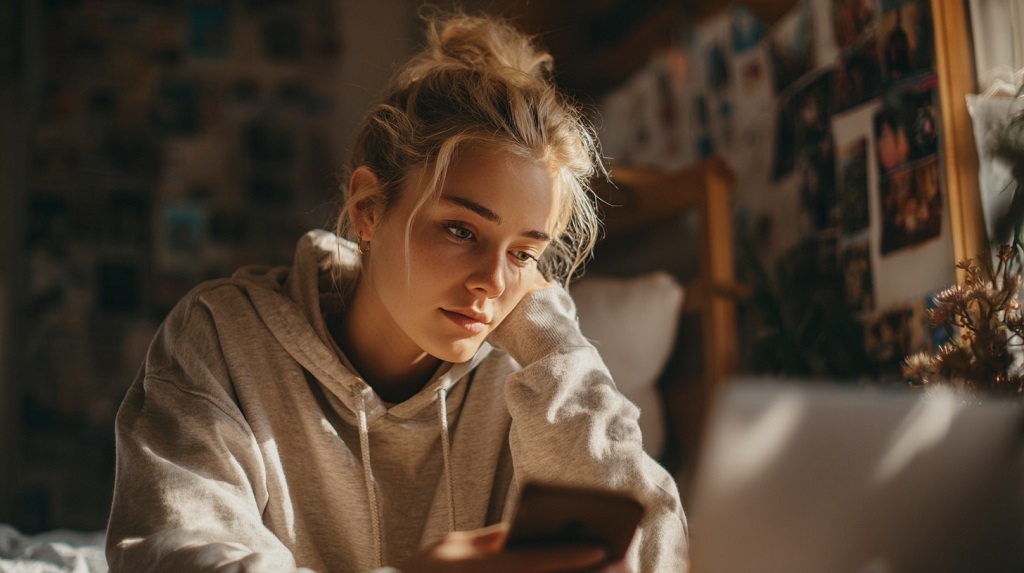
Scrolling through perfect pictures creates a sense that everyone else is doing better.
Pew Research Center found that about 34% of teens feel worse about their lives after seeing what others post.
Psychologists say that kind of constant comparison can lower self-esteem, especially for girls who spend hours looking at influencers or friends who seem happier and more confident.
Fear of Missing Out
Seeing other people together or having fun can make teens feel like outsiders.
Experts at the University of Glasgow say the fear of missing out, or FOMO, keeps many teenagers awake at night, scrolling through updates to make sure they do not fall behind socially.
What starts as curiosity can easily become stress and loneliness.
Sleep and Mental Fatigue
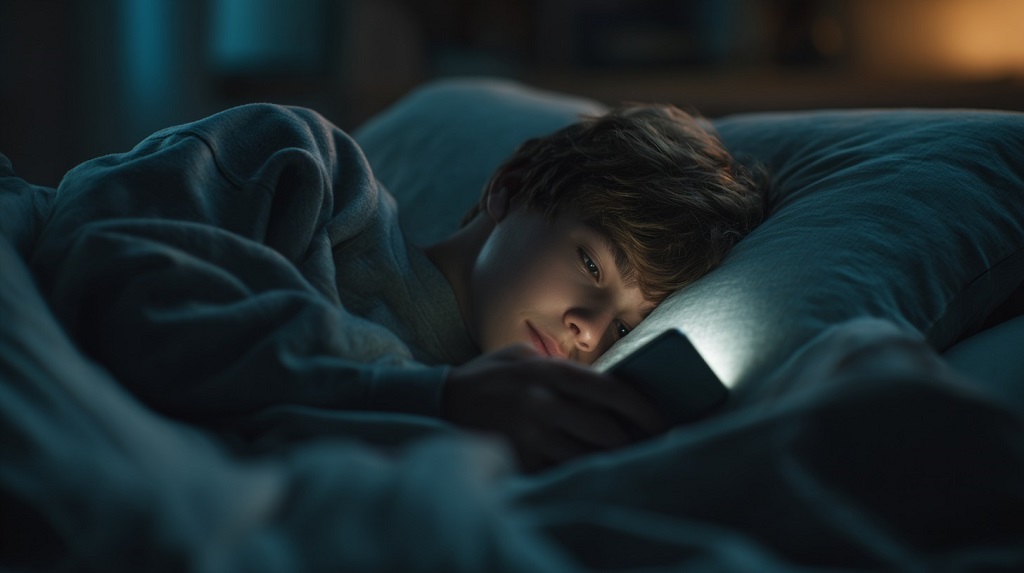
The World Health Organization reports that about one in three teens stays online until after midnight.
The blue light from phones interferes with sleep, and emotional content makes it harder to relax.
Poor sleep leads to low energy, short tempers, and trouble focusing, all factors linked to anxiety and depression.
Algorithm Traps
The more teens interact with certain topics, especially sad or emotional ones, the more the platforms feed them similar content.
Experts warn that this creates a cycle where social media keeps reinforcing negative thoughts.
The U.S. Surgeon General says those patterns make it easy for small worries to grow into serious emotional distress.
Chasing Validation
Many teens post for approval, hoping for likes or comments that prove they are noticed. When that attention fades, they feel invisible.
Psychologists say that loop works like a slot machine, with quick rewards that vanish almost instantly, leaving behind frustration and a need for more.
Mental health specialists say the main issue is not social media itself but the way it keeps teens stuck in emotional loops that wear down confidence, sleep, and self-worth.
Girls Are Struggling the Most
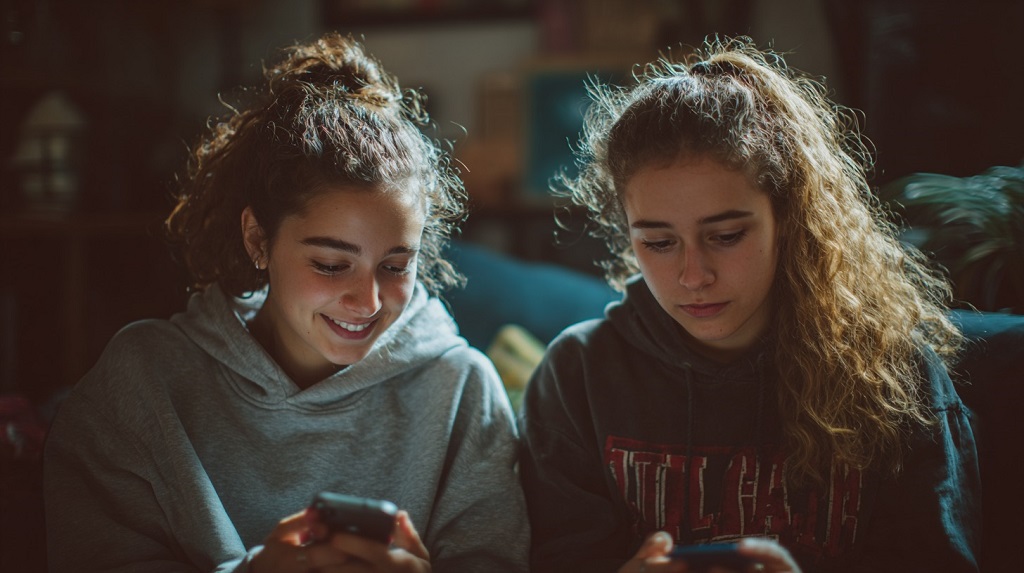
Across studies in the United States and Europe, researchers keep seeing the same pattern. Teenage girls report the sharpest rise in sadness, anxiety, and body image problems linked to social media use.
The Centers for Disease Control and Prevention found that nearly 60% of high school girls feel persistently sad or hopeless. Among boys, that number is 29%.
Experts at Yale Child Study Center and Johns Hopkins Medicine say that girls face unique pressures on visual platforms like Instagram and TikTok.
They are exposed to endless posts about beauty, fitness, and popularity that create unrealistic standards. The constant stream of idealized images encourages comparison, often leaving girls feeling less attractive, less liked, and less valued.
Researchers at Pew Research Center found that teen girls are almost twice as likely as boys to say social media hurts their confidence. Many also report feeling left out when friends post photos or videos that do not include them.
Psychologists warn that those small moments add up over time, creating patterns of loneliness and self-doubt.
The World Health Organization reports similar findings across Europe. In its survey of nearly 280,000 adolescents, 13% of girls showed signs of problematic social media behavior, compared with 9% of boys.
Those numbers include symptoms such as anxiety when offline, loss of sleep, and neglect of school or physical activity.
Doctors say that for many girls, the problem is not only the content but the culture of perfection that surrounds it. The need to look flawless, stay connected, and keep up with trends turns social media into a source of pressure instead of comfort.
When those expectations collide with the normal insecurities of adolescence, mental health begins to suffer.
Sleep, Stress, and the Hidden Cost of Constant Connection
Teens often fall asleep with a phone in hand, scrolling through feeds that never end. The habit may feel harmless, but the effects go deeper than most realize. Nighttime phone use cuts into rest, adds stress, and quietly reshapes emotional balance.
- Around six in ten teens look at their phones during the last hour before bed.
- Those who stay online late get about one hour less sleep than others.
- Lack of sleep raises the risk of depression, anxiety, and poor focus the next day.
The combination of blue light, emotional stimulation, and constant alerts keeps the brain wired when it should be winding down.
Many teens say they check social media “just for a few minutes” before sleep and end up losing track of time. The more exhausted they feel, the harder it becomes to disconnect.
When Likes Replace Real Connection
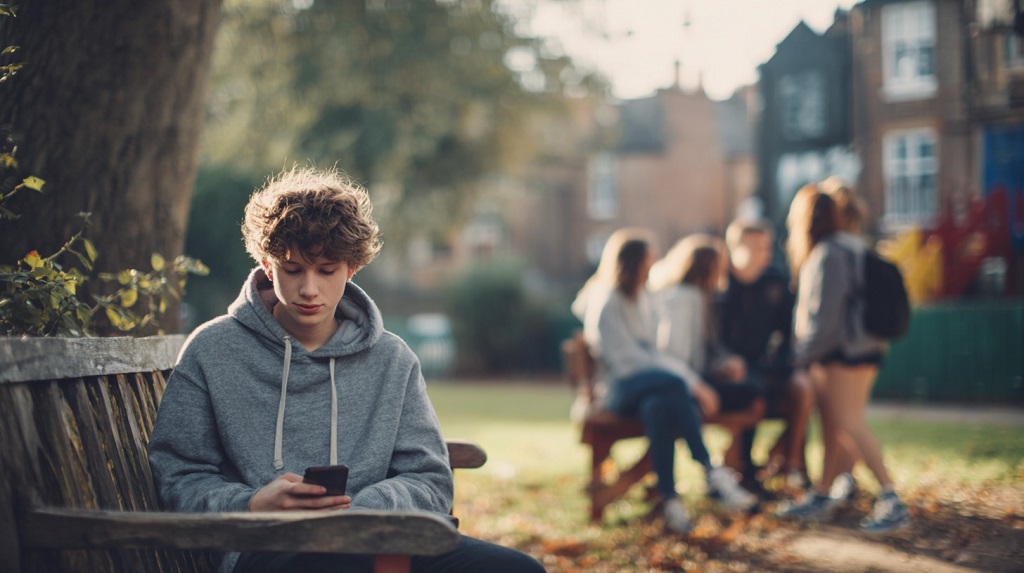
Many teens say social media helps them stay in touch, yet the connection often feels hollow. Online conversations rarely replace the warmth of being face-to-face. A growing number of young people describe feeling lonely even when they are constantly chatting with friends online.
- Nearly half of teens say they feel more isolated the more time they spend on social media.
- Many report that online contact feels “less real” and “less comforting” than in-person friendships.
- Girls who keep strong in-person social ties are less likely to show symptoms of depression.
Endless online contact can create the illusion of closeness, yet emotional bonds remain weak. Constant updates, scrolling, and notifications fill the day with noise but not with real support.
Teenagers who struggle to fit in offline often turn to digital spaces for comfort, but the same spaces can make isolation worse. Genuine friendship builds resilience, while online comparison often breaks it down.
How Algorithms Feed the Cycle of Anxiety
Social media platforms thrive on attention. Algorithms track every tap, pause, and share to predict what keeps users hooked.
For teens, that means a constant stream of emotionally charged content. What starts as entertainment quickly becomes a loop that reinforces stress and self-doubt.
- Platforms highlight posts that trigger strong emotions, like outrage or envy.
- The longer teens engage, the more extreme the content becomes.
- Exposure to negative or unrealistic material fuels anxiety and distorts self-image.
Many teens describe the pressure to post, to stay relevant, or to keep streaks alive. That pressure builds a cycle of reward and worry.
The short bursts of validation that come with likes or views fade fast, replaced by the urge to seek more. Over time, the habit rewires attention, reducing patience and deep focus.
The Bottom Line
Teen mental health is in trouble, and the link to social media is impossible to ignore. Rates of sadness, anxiety, and self-doubt are climbing as time online keeps growing. Every post, message, and comment adds to a culture that never pauses, leaving many young people drained and uncertain about their place in the world.
A generation has grown up under the glow of a screen. What happens next depends on how seriously adults take the warning signs. The question is no longer if social media plays a role in teen depression, but how long society will wait to face that truth.

